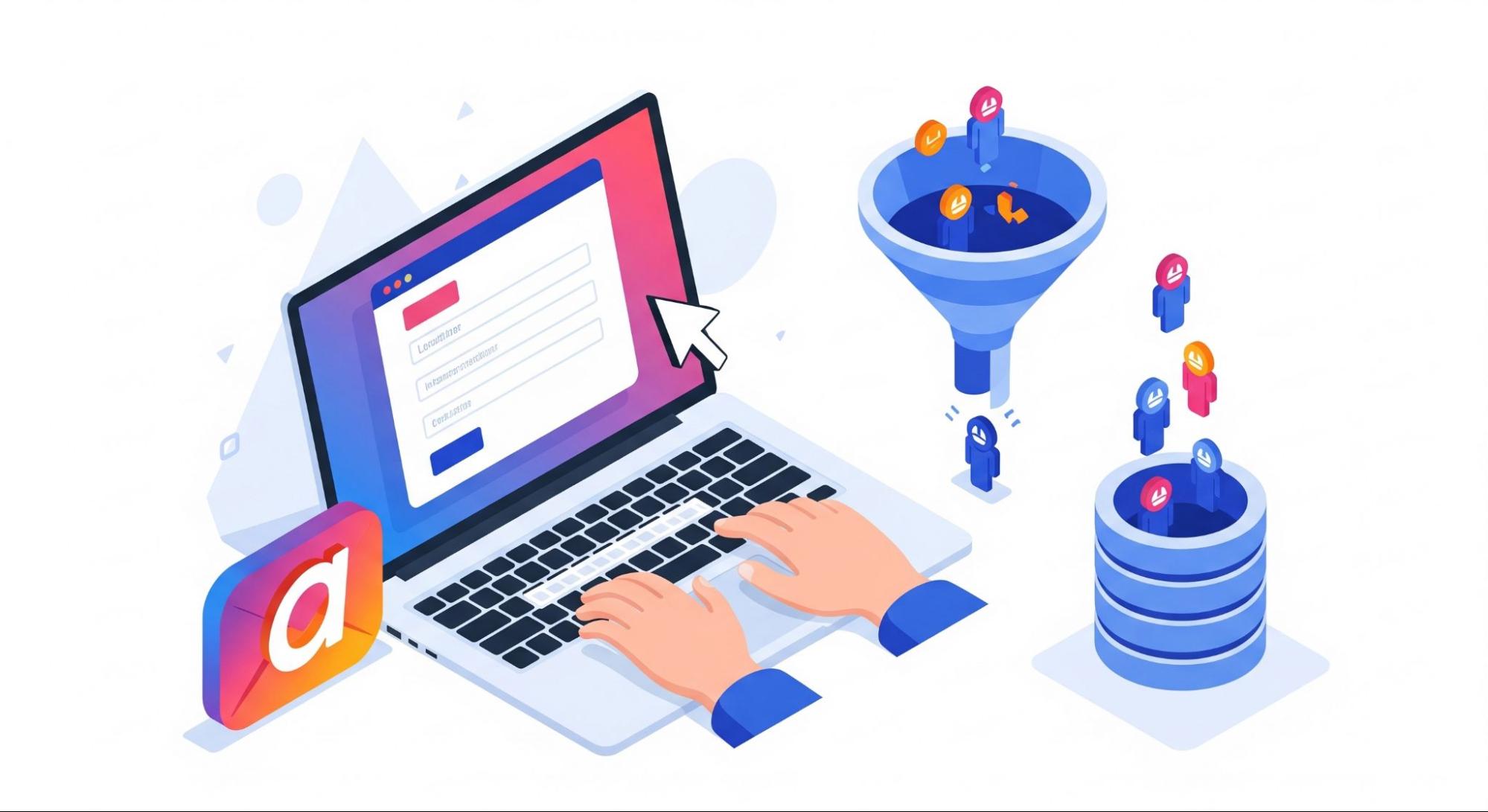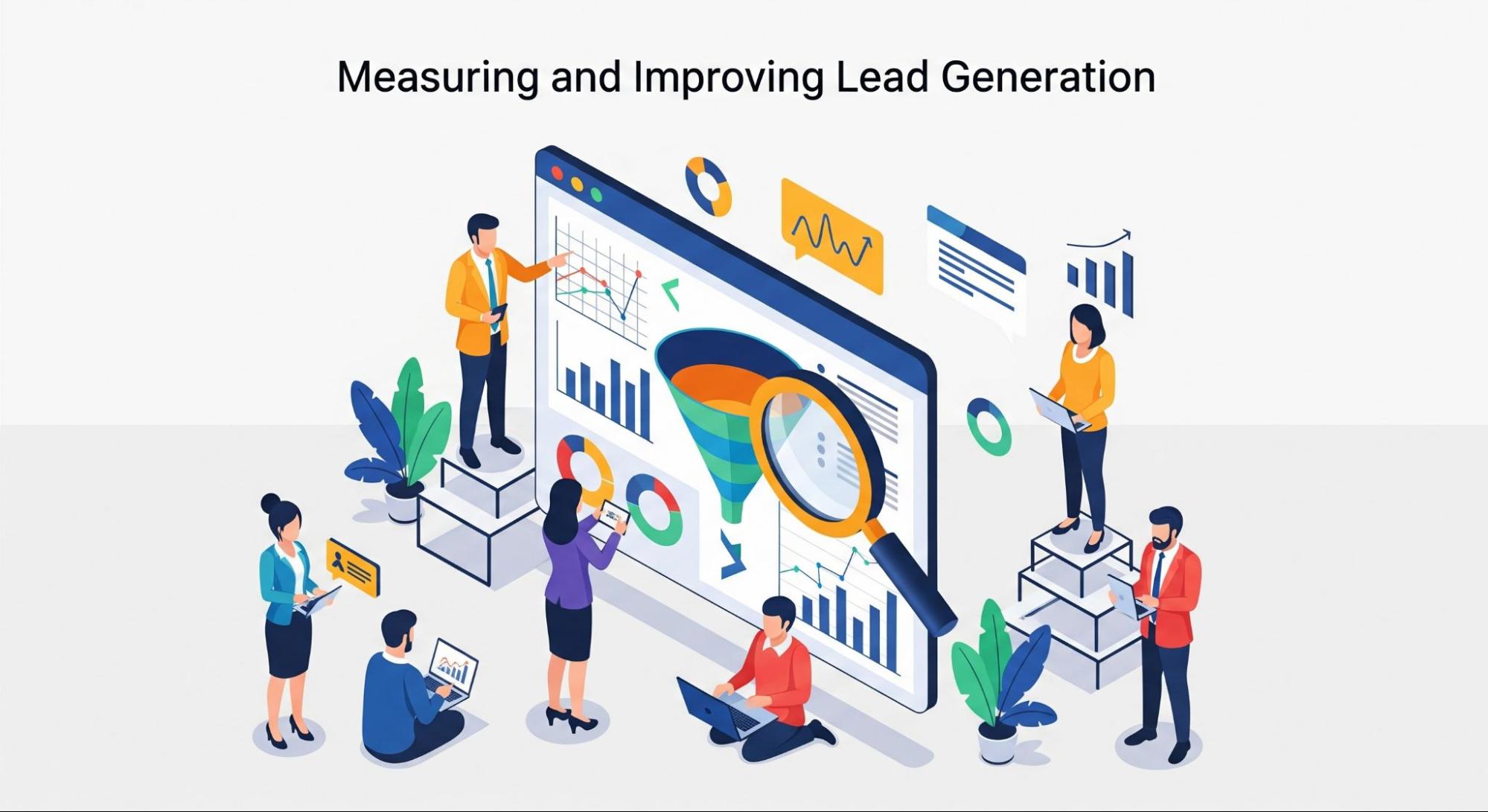Is your website generating traffic but failing to convert visitors into business? Many companies face this. You invest in a beautiful site and attract visitors, but the phone doesn't ring, and your inbox stays empty. This gap shows a missing piece: a strategy to turn visitors into prospects.
Lead generation in digital marketing involves identifying, attracting, and converting online users into potential customers. It's about creating genuine interest in your products or services, not just getting clicks.
This process takes a series of carefully planned actions designed to capture a user's information, build a relationship with them, and guide them toward a purchase decision, forming the essential bridge between your marketing efforts and sales success.
This guide breaks down the core stages, key channels, and critical factors for building a powerful lead generation engine for your business.
Lead Generation Digital Marketing: 5 Core Stages Explained

Think of lead generation as a journey you guide your potential customers on. Each stage is designed to move them smoothly from being a stranger to becoming a loyal customer.
Attracting Traffic
The first step is getting the right people to your digital front door. Without traffic, you have no one to convert into leads.
- SEO for organic visibility: Building your website's authority so it appears naturally on Google when users search for the problems you help with.
- Content marketing: Creating valuable blog posts, videos, and infographics that answer your audience's questions and establish you as an expert.
- Paid advertising (PPC): Using targeted ads on places like Google and social media to reach specific demographics and interests quickly.
Capturing Leads
Once visitors are on your site, you need a way to capture their information. This is where a casual browser becomes a potential lead.
- Optimized landing pages: Creating focused pages with a single goal: to get a visitor to take a specific action, like downloading a guide or signing up for a webinar.
- Website pop-ups and forms: Using well-timed pop-ups and clear contact forms to make it easy for visitors to give you their email address for something of value.
Nurturing Leads
Not every lead is ready to buy immediately. Lead nurturing is the crucial process of building a relationship and staying top-of-mind.
- Email marketing automation: Sending a series of automated, relevant emails to educate your leads and guide them through their decision-making process.
- Personalized content and targeted offers: Sharing content and promotions that are directly related to a lead's interests and previous interactions with your brand.
Qualifying Leads
To make your sales team more efficient, you must identify which leads are most likely to become customers. Opening a pricing page to prioritize follow-up with the most engaged prospects.
Converting Leads
This is the final stage where a qualified lead becomes a paying customer. The transition from marketing to sales has to be seamless.
- Sales calls: Reaching out directly to highly qualified leads to understand their needs and explain how your product or service is the right fit.
- Product demos: Offering a personalized walkthrough of your product to show its value in a practical, hands-on way.
- Retargeting campaigns: Showing specific ads to people who have already visited your website, reminding them of your brand and encouraging them to come back and convert.
Key Digital Marketing Channels for Lead Generation
A successful strategy uses a mix of channels to create multiple touchpoints for your audience.
Search Engine Optimization (SEO)
SEO is the foundation for long-term, sustainable lead generation. By optimizing your site with on-page, technical, and local SEO, you attract high-intent traffic from users actively searching for your services, resulting in high-quality organic leads.
Social Media Marketing
Platforms like Facebook, LinkedIn, and Instagram are powerful tools for generating leads. This involves a mix of organic engagement to build a community and paid social media campaigns to target specific user segments with compelling offers.
Content Marketing
Content is the fuel for almost every lead generation tactic. By consistently publishing educational blog posts, in-depth guides, and engaging videos, you build trust, demonstrate your expertise, and naturally attract potential customers.
Email Marketing
Email remains one of the most effective channels for nurturing leads. Using segmented lists, personalized campaigns, and automated drip lines, you can deliver the right message to the right person at the right time, guiding them toward a purchase.
Paid Advertising (PPC)
When you need leads quickly, PPC is the answer. Platforms like Google Ads, Facebook Ads, and LinkedIn Ads allow you to get your message in front of a highly targeted audience almost instantly, making it ideal for testing offers and driving immediate traffic.
Critical Success Factors for Lead Generation
Executing the right tactics isn't enough. Your success depends on these foundational elements.
- Understanding Your Target Audience: The most crucial factor is knowing who you're talking to. You must research their needs, pain points, and online behaviors to create marketing messages that resonate deeply.
- Creating Valuable Content: Your content must be more than just a sales pitch. It needs to be informative, engaging, and tailored to where your buyer is in their journey, from initial awareness to final decision.
- Optimizing Your Online Presence: Your website is your digital hub. It must be mobile-friendly, fast-loading, and user-focused to provide a smooth experience that encourages visitors to stay and convert.
- Using Data and Analytics: You can't improve what you don't measure. Track your key performance indicators (KPIs) and refine your campaigns using data from Google Analytics, Search Console, and your CRM.
Measuring and Improving Lead Generation

A data-driven approach is essential for continuous improvement and maximizing your return on investment (ROI).
- Conversion rate tracking: Monitor the percentage of visitors who complete a desired action, like filling out a form.
- Lead quality scoring: Evaluate if your marketing efforts are attracting the right kind of prospects who are likely to buy.
- Cost-per-lead analysis: Calculate how much you spend on average to acquire one new lead to ensure your campaigns are profitable.
- A/B testing: Continuously test different versions of your landing pages, ad copy, and calls-to-action to identify what works best.
How RankEgg Helps Businesses Generate and Convert More Leads
Putting all these pieces together from SEO and PPC to content and conversion rate optimization (CRO) can be complex and time-consuming. This is where having an expert partner makes all the difference.
At RankEgg, we provide end-to-end digital marketing solutions designed to build a powerful lead generation machine for your business. We don't rely on guesswork. Our team uses data-driven strategies to attract high-quality traffic, capture visitor information effectively, and nurture those prospects into loyal customers. Through continuous optimization and transparent reporting, we ensure your marketing investment delivers sustainable growth and a strong return.
Conclusion
Effective lead generation digital marketing is not a one-time campaign but a continuous, strategic process. By attracting the right traffic, capturing their interest, nurturing the relationship, and analyzing your results, you can build a predictable pipeline of customers that fuels consistent business growth. It's about creating a system that turns strangers into supporters and transforms your website from a simple online brochure into a dynamic engine for success.
Frequently Asked Questions (FAQs)
The timeline varies by channel. Paid advertising (PPC) can generate leads within days or even hours of launching a campaign. However, organic strategies like SEO and content marketing are long-term investments that typically take 3-6 months to build momentum and start delivering consistent, high-quality leads.
A "lead" is someone who has shown initial interest by providing their contact information (e.g., downloading an ebook). A "prospect" is a lead that has been qualified as a good fit for your product or service, often through lead scoring or direct contact, and is considered a potential customer moving through the sales process.
While you can start without one, a Customer Relationship Management (CRM) system is highly recommended. A CRM helps you organize contact information, track every interaction with your leads, manage your sales pipeline, and analyze data to improve your marketing and sales efforts. It becomes essential as your business grows.

